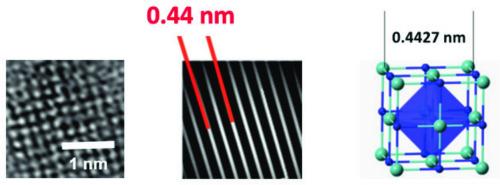Novel hardmetals with nanograin reinforced binder: Structure, properties and applications
IF 4.6
2区 材料科学
Q2 MATERIALS SCIENCE, MULTIDISCIPLINARY
International Journal of Refractory Metals & Hard Materials
Pub Date : 2025-09-04
DOI:10.1016/j.ijrmhm.2025.107397
引用次数: 0
Abstract
Conventional (first-generation) hardmetals with binders reinforced by hard W-Co-C nanoparticles, which are obtained by a special heat-treatment technology, having a brand name of MasterGrade™ were developed and implemented in industry about 20 years ago. Although they have significantly improved performance, conducting the heat-treatment is expensive and the nanoparticles are thermally unstable; their precipitation process is suppressed by impurities present in secondary raw materials employed in the manufacture. There is therefore a need to develop alternative hardmetals with nanograin reinforced binder obtained using another approach. As a result of basic research, a new phenomenon with respect to WC-TaC-Co hardmetals was discovered and reported in the literature. It was established that small amounts of TaC added to WC-Co hardmetals form an oversaturated solid solution in cobalt when solidifying the liquid binder during cooling from sintering temperatures. This solid solution decomposes when further cooling in the solid state resulting in the formation of (Ta,W)C nanoprecipitates in the binder. Based on this phenomenon novel hardmetal grades with binder reinforced by the (Ta,W)C nanoprecipitates designated as the “second-generation MasterGrade™“were developed and implemented in the manufacture. The nanoprecipitates form when cooling the hardmetals from sintering temperatures, allowing the need for consequent heat-treatment to be eliminated. The novel hardmetals are characterized by improved performance in comparison with standard WC-Co materials and the first-generation MasterGrade™ in laboratory performance tests on percussive drilling and concrete-cutting. The high temperature creep resistance of the submicron second-generation MasterGrade™ grade is significantly greater than that of the conventional grade with nearly the same WC mean grain size. Results of a lab test on subjecting walker module cubes, which belong to a special type of cubic anvils, to a high temperature and ultra-high pressure for a long time indicated that the deformation rate of the novel hardmetal is nearly half of that of a conventional submicron grade. The manufacture process of the novel hardmetals with nanograin reinforced binder is more economical and sustainable compared to that of the first-generation MasterGrade™.

新型纳米颗粒增强结合剂硬质合金:结构、性能及应用
传统的(第一代)硬质金属,通过特殊的热处理技术获得硬W-Co-C纳米颗粒增强的粘合剂,品牌名称为MasterGrade™,大约在20年前开发并应用于工业。虽然它们的性能得到了显著改善,但进行热处理的成本很高,而且纳米颗粒热不稳定;它们的沉淀过程受到制造中使用的二次原料中存在的杂质的抑制。因此,有必要利用另一种方法获得的纳米颗粒增强粘结剂来开发替代硬质合金。在基础研究的基础上,发现并报道了WC-TaC-Co硬质合金的一种新现象。结果表明,在WC-Co硬质合金中加入少量TaC,使液态粘结剂在烧结温度冷却后凝固,在钴中形成过饱和固溶体。这种固溶体在固体状态下进一步冷却时会分解,从而在粘合剂中形成(Ta,W)C纳米沉淀物。基于这一现象,新型硬质合金牌号由(Ta,W)C纳米沉淀物增强,被称为“第二代MasterGrade™”。当从烧结温度冷却硬质合金时形成纳米沉淀物,从而消除了后续热处理的需要。与标准WC-Co材料和第一代MasterGrade™相比,新型硬质合金的特点是在冲击钻井和混凝土切割的实验室性能测试中具有更高的性能。亚微米级第二代MasterGrade™牌号的耐高温蠕变性能显著高于WC平均晶粒尺寸几乎相同的常规牌号。walker模块立方体属于一种特殊类型的立方砧,将其长期置于高温和超高压下的实验室测试结果表明,这种新型硬质合金的变形率几乎是常规亚微米级合金的一半。与第一代MasterGrade™相比,采用纳米颗粒增强粘合剂的新型硬质合金的制造过程更加经济和可持续。
本文章由计算机程序翻译,如有差异,请以英文原文为准。
求助全文
约1分钟内获得全文
求助全文
来源期刊
CiteScore
7.00
自引率
13.90%
发文量
236
审稿时长
35 days
期刊介绍:
The International Journal of Refractory Metals and Hard Materials (IJRMHM) publishes original research articles concerned with all aspects of refractory metals and hard materials. Refractory metals are defined as metals with melting points higher than 1800 °C. These are tungsten, molybdenum, chromium, tantalum, niobium, hafnium, and rhenium, as well as many compounds and alloys based thereupon. Hard materials that are included in the scope of this journal are defined as materials with hardness values higher than 1000 kg/mm2, primarily intended for applications as manufacturing tools or wear resistant components in mechanical systems. Thus they encompass carbides, nitrides and borides of metals, and related compounds. A special focus of this journal is put on the family of hardmetals, which is also known as cemented tungsten carbide, and cermets which are based on titanium carbide and carbonitrides with or without a metal binder. Ceramics and superhard materials including diamond and cubic boron nitride may also be accepted provided the subject material is presented as hard materials as defined above.

 求助内容:
求助内容: 应助结果提醒方式:
应助结果提醒方式:


